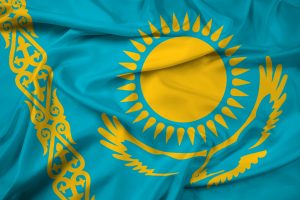Kazakhstan’s President Kassym-Jomart Tokayev officially asked the Collective Security Treaty Organization (CSTO) to deploy troops to help “pacify” the ongoing unrest across several cities in the country, a move that is poised to change the course of the current political turmoil.
The protests, which were sparked on January 2 from dissatisfaction over the price of car fuel in the western Mangistau region, quickly spread to major cities, mutating into calls for regime change and an end to injustice.
The crowds that took the streets on January 4 in all of Kazakhstan’s major cities were gradually pushed away by riot police, which used stun grenades and tear gas to disperse the crowds. Several thousands, an unprecedented number in Kazakhstan’s 30 years of independence, chanted against the regime.
Into the early morning of the following day, however, the presence of different individuals – more focused on looting and setting cars ablaze – changed the nature of the protest, which became a direct, violent confrontation between law enforcement and the more violent among the civilians. During a seven-hour internet blackout, clashes erupted across Almaty, the country’s largest city. Officials say that “dozens were liquidated” as a result of the confrontation, with around a dozen police reportedly killed.
As of January 6, it is impossible to independently verify the number of casualties of the three most violent days of clashes.
After promises of inflation control and a reshuffle of the cabinet failed to placate protesters, Tokayev said that violence would not be tolerated, a way for the president to flex the government’s muscles. From the night of January 4 onward, however, Tokayev looked like he had lost the grip on power he so adamantly claimed to hold.
On January 5, as clashes grew increasingly violent and looters vandalized the city, Tokayev first announced he had fired the head of the KNB, the security service, Karim Massimov, and then called for a CSTO intervention.
Massimov, like his deputy Samat Abish (who was fired on January 4), is a loyalist of former President Nursultan Nazarbayev, who ruled the country for 29 years until 2019 and hand-picked Tokayev to be his successor. On January 4, in a televised speech, Tokayev announced he would take over responsibility as head of the National Security Council, which was until then held by Nazarbayev.
A decision to change the leadership of the KNB and at the same time to ask for external help to restore public order could only mean one of two things. Either Tokayev is “cleaning house” and getting rid of Nazarbayev loyalists so as to build his own elite circle to run the country — a move that would also entail a recalibration of the military and security elites in his favor — or Tokayev has partially or completely lost control of Kazakhstan’s own military and materially needs external help to maintain public order.
In either case, the call for the CSTO intervention demonstrates unprecedented internal weakness in the regime.
If Tokayev indeed kick-started a process of “de-Nazarbayevification,” the question is where will he find his own legitimacy now that he has lost authority over the people and possibly over parts of the security apparatus? If he needed external help to “pacify” public unrest to buy time to build his own elite, he very well may then become dependent on the CSTO and the countries the organization represents to be ready to intervene should he lose control again.
If instead this was Tokayev’s last cry for help, we should expect a reshuffle of power once the dust has settled. Without full control of the security apparatus, the military, and the police, Tokayev may have lost any residual reason to remain in power.
While the opaque political crisis continues, however, real clashes are still going on between local and international security forces and civilians in the squares. Thousands have been arrested, even more have been injured, and an unknown number killed in the three-day confrontation. Kazakh citizens, secluded in their homes with scant internet access, would prefer that the violence subside and the government show a willingness to have a more open dialogue.
































